The History of the Problem's Final Score
(1999 - 2011)
2002 - Confirming the Score
|
|
|
|
|
|
|
|
|
|
Black wins by three points. This result is compatible to the statement of Fujisawa Hideyuki (two points for Black) under the assumption that he considered the 71st Black stone as additional prisoner for White. However, Merlijn Kuin did not mention anything about a missing Black stone in his solution's commentary. So, perhaps he had another sequence in mind? |
|
///:
|
|
White lost four points of territory (173, 175, 176, |
|
///:
|
|
Both sides lost one point of territory ( |
 764
764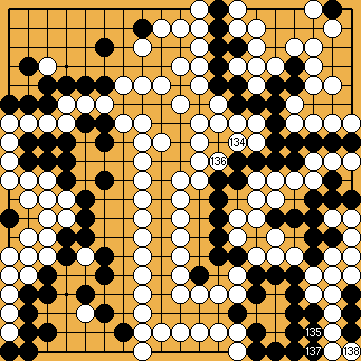
 :
: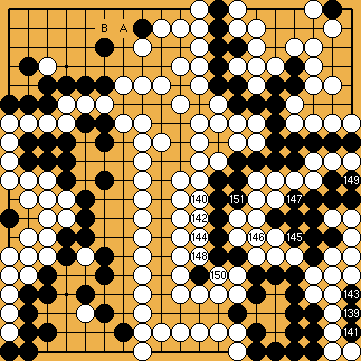
 :
: ,
,  .
.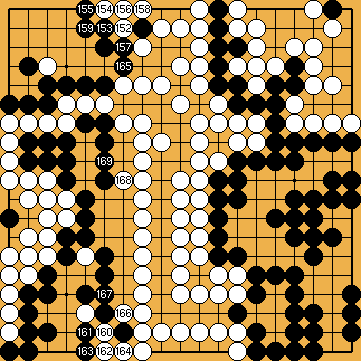
 :
: ) that is used for the Semeai Variation of the goproblems.com's solution.
) that is used for the Semeai Variation of the goproblems.com's solution.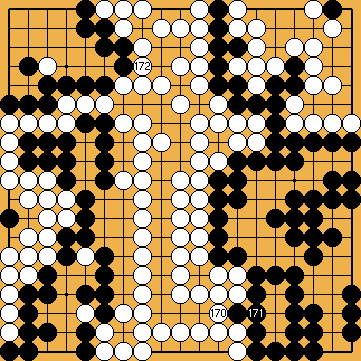
 :
: first.
first.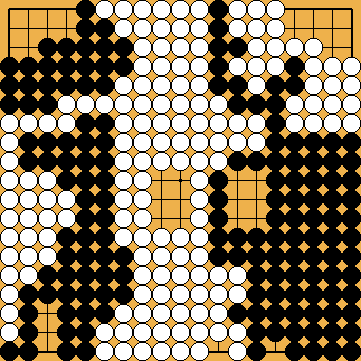
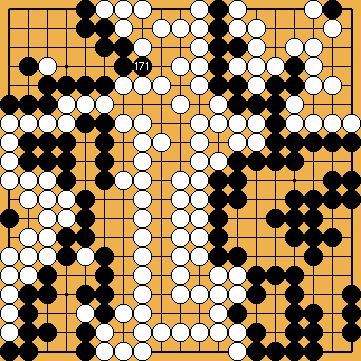
 :
: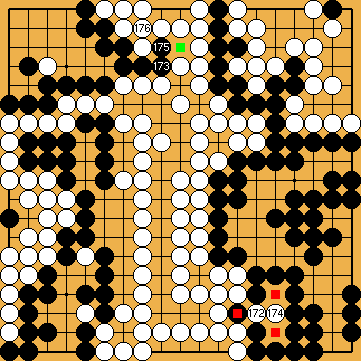
 ); Black lost three points of territory (174,
); Black lost three points of territory (174,  ), and one stone (
), and one stone ( ); so the score remains unchanged.
); so the score remains unchanged.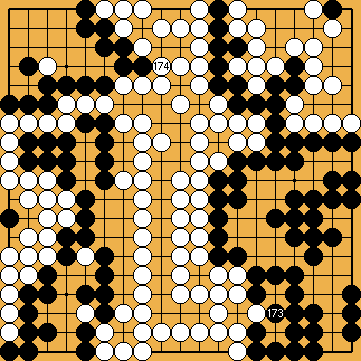
 :
: on the upper edge.
on the upper edge.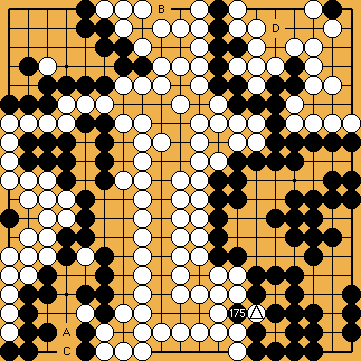
 :
: . Black has at least as many ko-threats as White (
. Black has at least as many ko-threats as White ( ,
,  ), so Black will win, and connect the ko.
), so Black will win, and connect the ko.
